I’m feeling the urge to post about Rupert Bear. I don’t think he’s very well known in America or countries other than the UK, but I could be wrong. If so, feel free to correct me.
Rupert first appeared in the Daily Express newspaper as long ago as 1920, in the story ‘Little Lost Bear’, and was written and drawn by Mary Tourtel (1874-1948). In 1921, the first Rupert books were published, and ten years later, the first Monster Rupert book appeared on shelves. This featured enjoyable larger-format stories by Mary Tourtel.
As a kid, I had one of these Monster Rupert books that had been passed down to my brother and I along with a big pile of Rupert Adventure Series booklets from a friend of the family. We absolutely treasured these, and read them over and over, but the mysterious disappearance of the whole pile in later years led me to try and replenish the collection via eBay. Sadly, they are never as pristine as ours were, but at least they still exist.
Many of my peers grew up with Rupert, and appreciate the stories with the same enthusiasm. I remember Brendan McCarthy turning me onto the above painting when I was helping him to design his Swimini Purpose book. This was one of a series of endpapers that Alfred Bestall painted after he took over as Rupert artist and author in 1935. It was a painting I’d never seen before, but it’s just so wonderfully evocative. At first I thought Rupert and his pal, Bill Badger were staring into the darkness of the forest, but after scanning it, I think I can see a ripple, so it may well be water, but it really doesn’t matter. I just find it so peacefully sublime.
I’m not an expert on the history of Rupert, but there is a very good book on the subject entitled, Rupert: a Bear's Life by George C. Perry with Alfred Bestall. Whether the stories are by Tourtel or Bestall, they both have an element of the surreal, and that’s what I still find incredibly appealing.
Alfred Bestall’s village of Nutwood and surrounding countryside seems to run parallel to my impression of the England I grew up in. Looking at the following painting brings back a memory I have of lying on the grass on a hot summer’s day, outside my Aunt Maggie’s cottage in Hartfield, East Sussex, in July of 1969. I still recall the peace and tranquility, enhanced by the distant drone of an aircraft; the sound rippling its way across a cloudless blue sky.
Another of what Spalding Gray would call perfect moments. The reason I know it was July 1969, is because that afternoon I overheard my aunt tell my parents, in hushed tones, of a tragic event the neighbours had informed her about. Someone just down the road had been discovered floating dead in their swimming pool. Someone by the name of Jones from a famous rock band. This was of course, Brian Jones of The Rolling Stones. How I’ve gone from Rupert to The Rolling Stones is a by-product of my flashback, but even today the distant sound of a plane takes me straight back to that day. Weird, innit!
Rupert Adventure Series No. 7 - ‘Rupert and the Little Tree’.
Writer: Alfred Bestall. Artist: Alfred Bestall.
Published by Daily Express. February 1952.
Let me share some favourite images from my collection of the Rupert Adventure Series. First up, this one I have framed on the wall of my office. ‘Rupert and the Little Tree’—how joyfully weird is that!
One of the panels from ‘Rupert and the Little Tree’.
The design and layout of the Alfred Bestall stories became so well known, they were used as inspiration for the classic story ‘Once Upon a Time-Lord’, in Marvel UK’s Doctor Who Magazine.
Writer: Steve Parkhouse. Artist: John Ridgway. Letterer: Annie Parkhouse.
The same layout was also used in the much-loved 2000 AD Prog #606 story, ‘Bradley & The Toboggan Race’. (with thanks to Mike Holman).
Writer: Alan McKenzie. Artist: Simon Harrison. Letterer: Typehouse.
Rupert not only inspired the Doctor Who and Bradley stories, but also one of my favourite 2000 AD series, The Journal of Luke Kirby ‘The Old Straight Track’, featuring Alan and Steve's wonderful homage to Alfred Bestall's Rupert and his Chinese companion, Tigerlily, seen below on a Chromalin proof from my collection.
2000 AD Prog #958, 22nd September 1995.
Writer: Alan McKenzie. Artist: Steve Parkhouse. Letterer: Steve Parkhouse.
There is also another 2000 AD connection to Rupert. Gina Hart, renowned for her coloring work on the contemporary Rupert strips by John Harrold, also regularly coloured strips for 2000 AD.
Tigerlily and her father, the Chinese Conjurer were featured many times in the Rupert series, and added to the magical nature of the stories.
I find the Rupert Adventure Series title pages to be beautifully well designed.
The boy with the pained expression is me, reading one of the books from our Rupert stash, in the back garden of our house in the 1960s.
Here are a few books I’ve managed to acquire fairly recently.
Rupert Adventure Series No. 32 - ‘Rupert Spring Adventures’.
Writer: Alfred Bestall. Artist: Alfred Bestall.
Published by Daily Express. April 1957.
Rupert Adventure Series No. 14 - ‘Rupert in the Tree-Tops’.
Writer: Alfred Bestall. Artist: Alfred Bestall.
Published by Daily Express. August 1952.
Rupert Adventure Series No. 7 - ‘Rupert and the Little 'Plane’.
Writer: Alfred Bestall. Artist: Alfred Bestall.
Published by Daily Express. September 1950.
So, that’s the end of my little trip to Nutwood for now. I’d be interested to hear from anyone else who had the pleasure of reading these books as a kid.


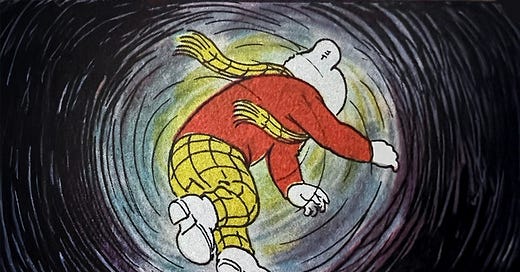




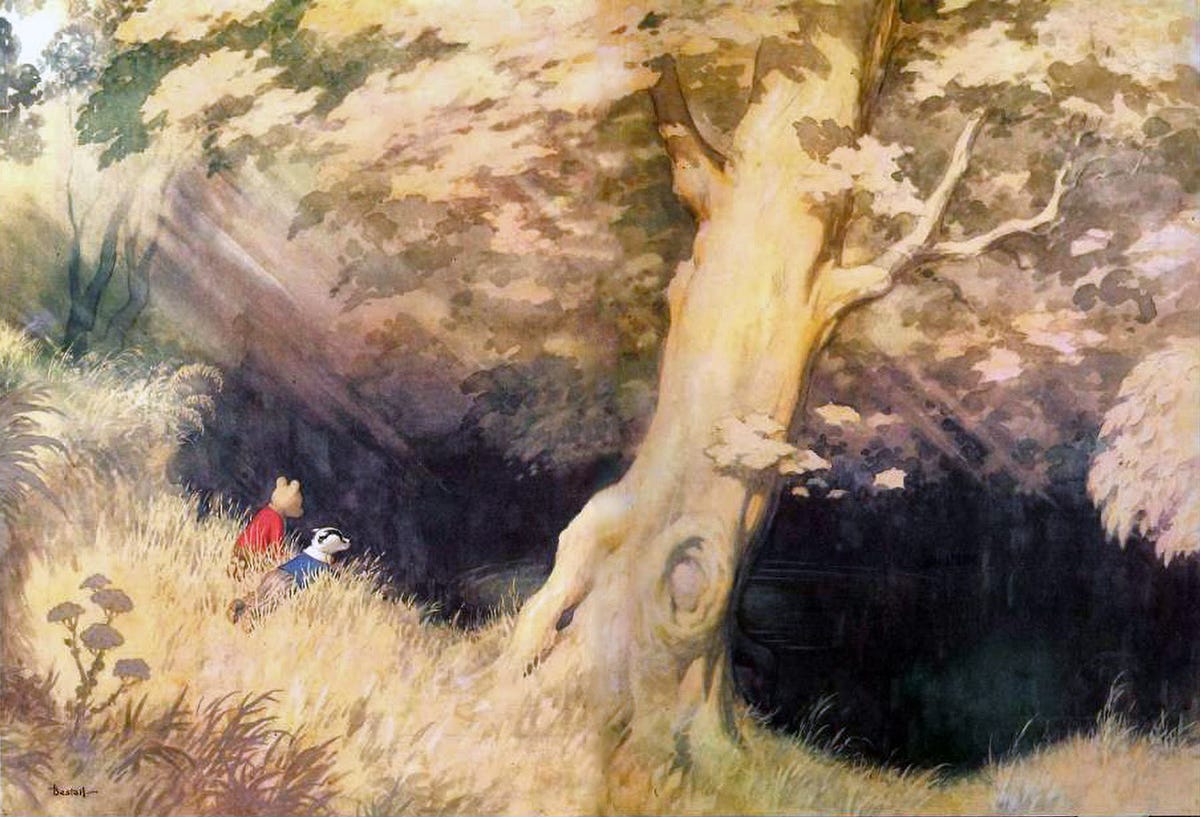
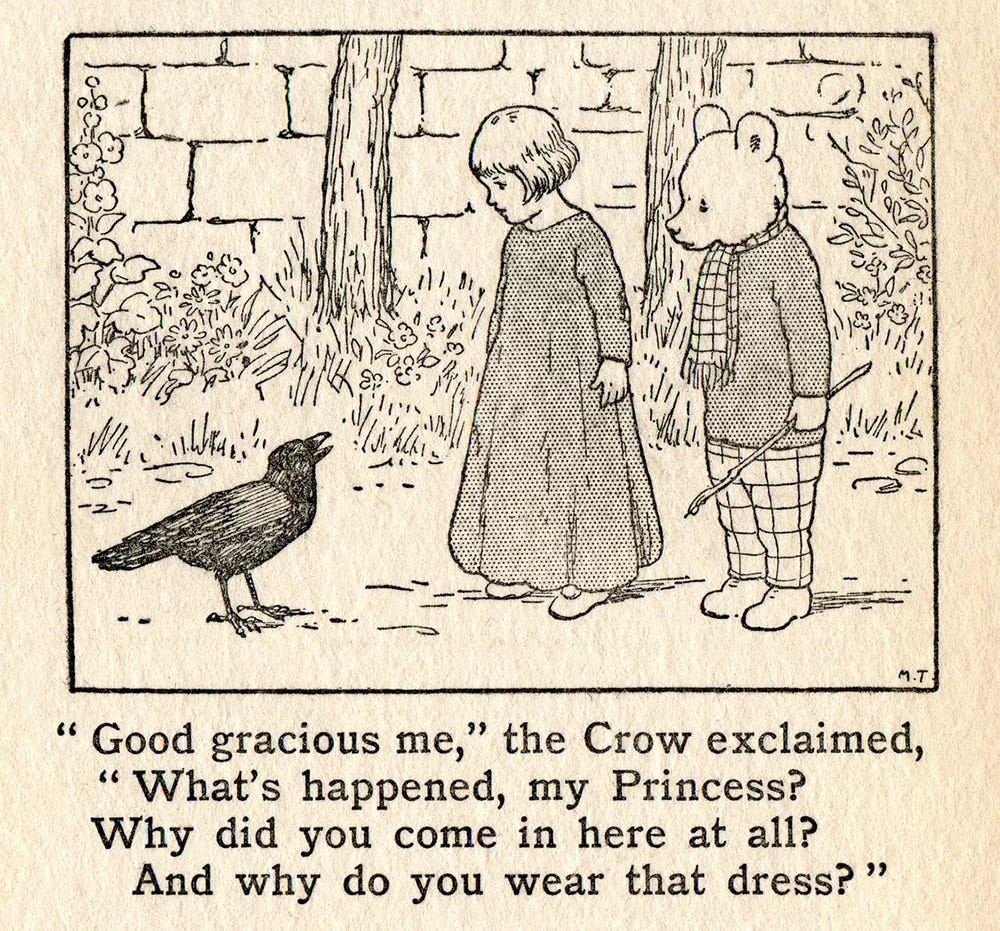


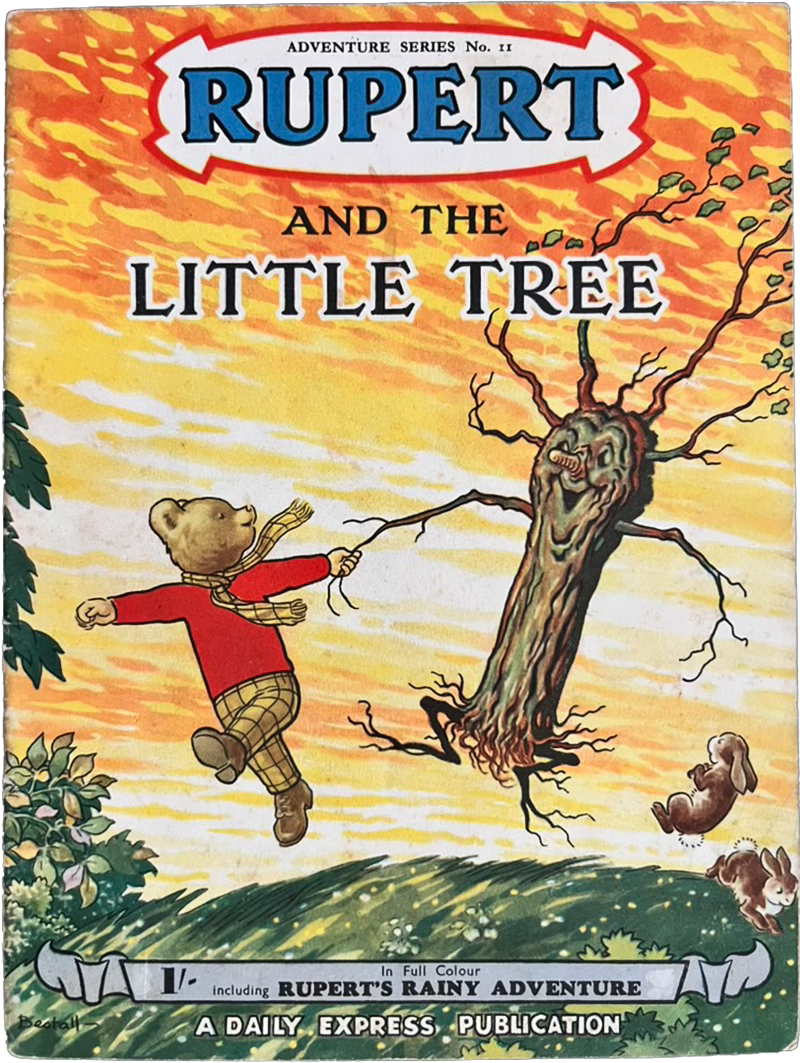


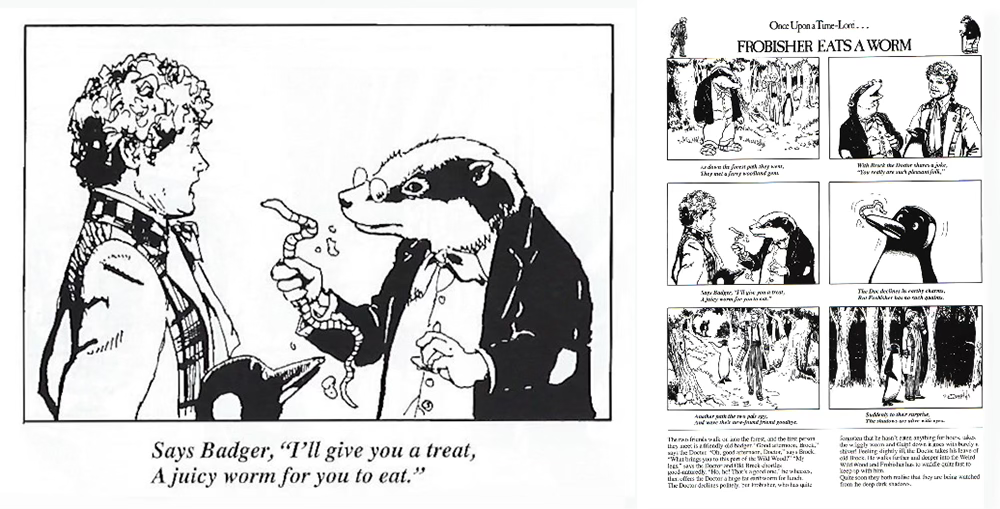



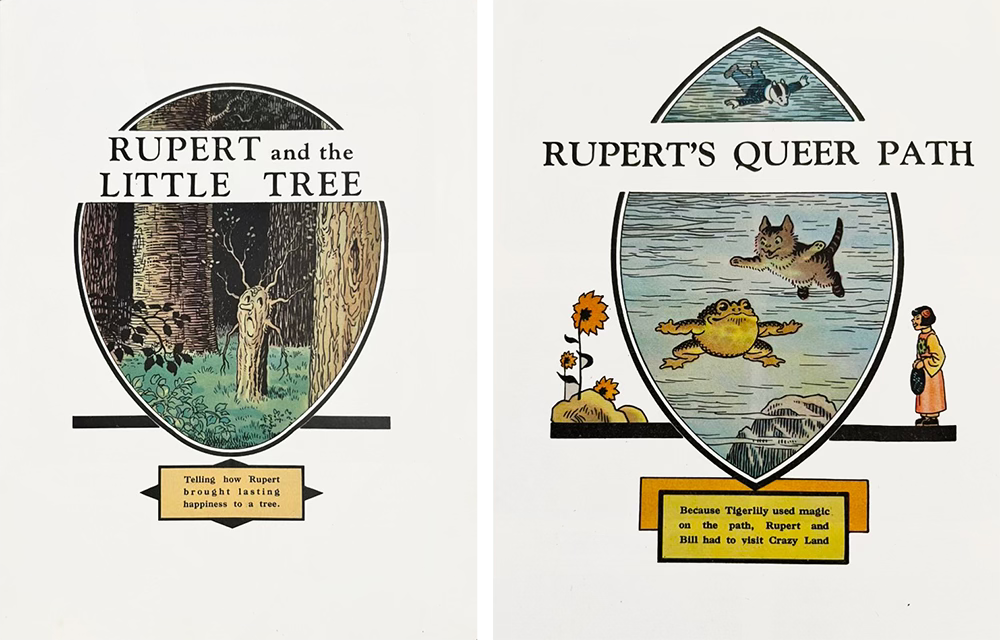



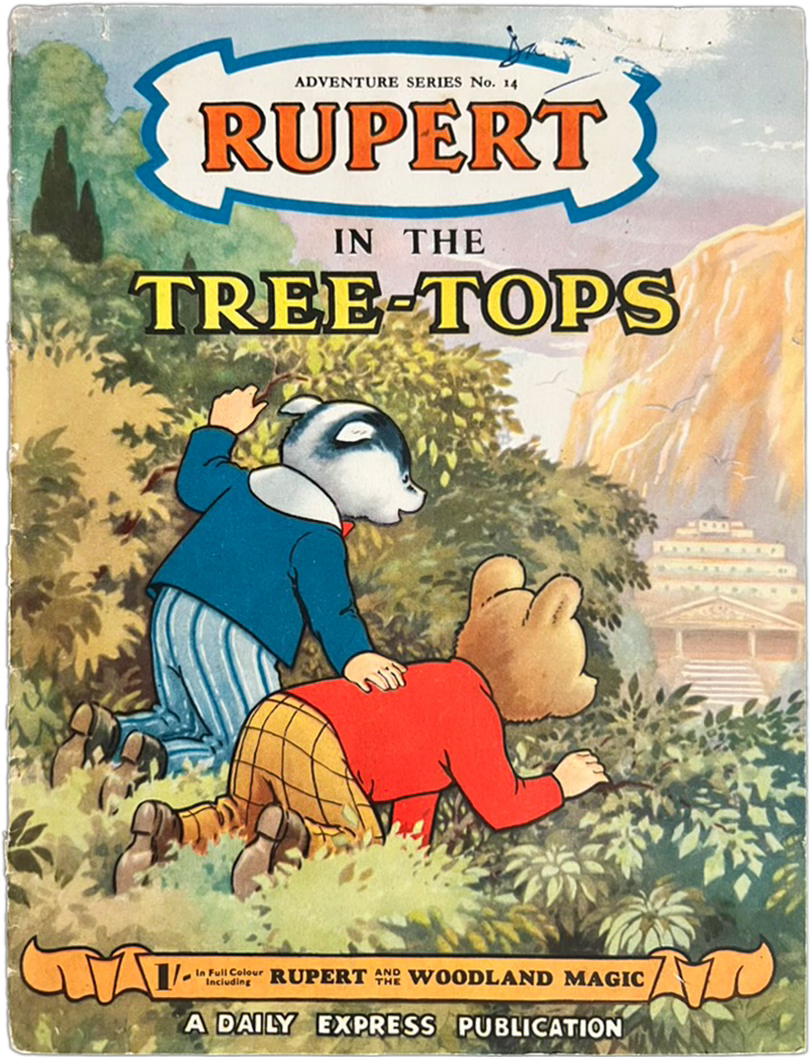

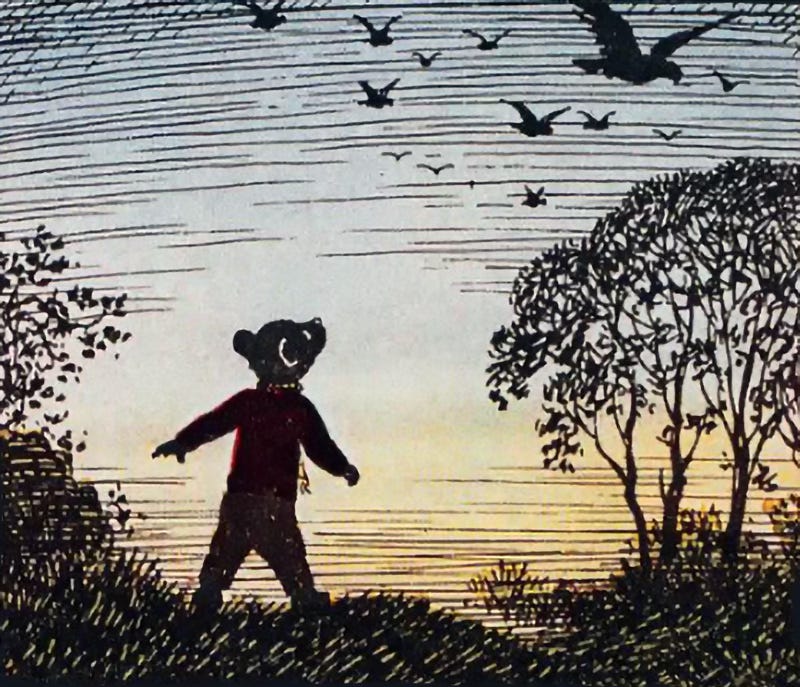
Growing up with a younger brother called ‘Rupert’ this little bear has been a constant fixture in our lives. Another 2000ad adjacent connection would be Bryan Talbot’s Grandville which opens with a murder investigation in Nutwood.
"Everybody knows his name!" Thanks for the memories. I actually had a friend called Rupert and I think I first read his copies of his namesake's books.